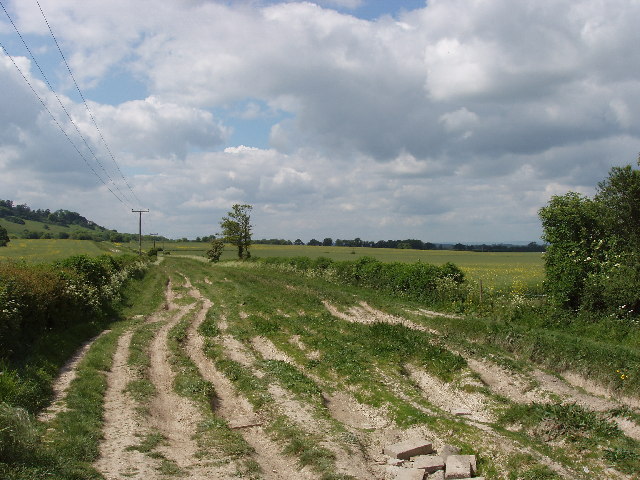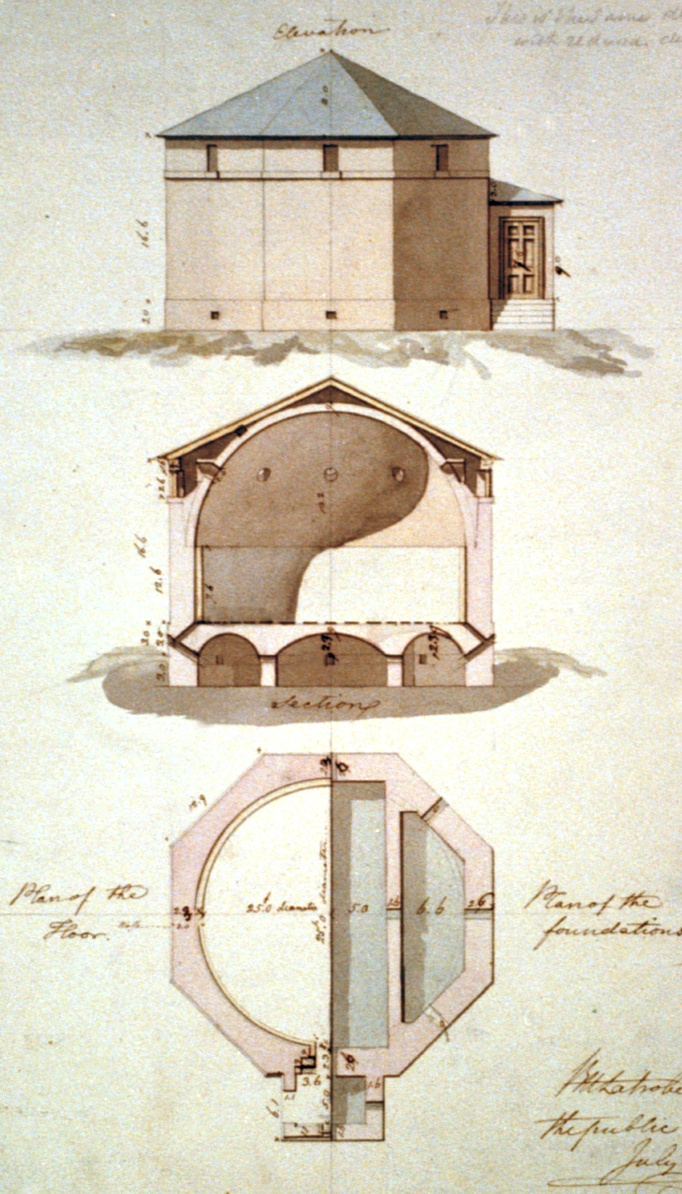|
Sedgeford, Norfolk
Sedgeford is a village and civil parish in the English county of Norfolk, about 5 miles south of the North Sea and east of the Wash. It is 36 miles north-west of Norwich. Its area of had a population, including Fring, of 613 at the 2011 Census. It was estimated at 601 in 2019. For local-government purposes, it falls within the district of King's Lynn and West Norfolk. It lies in a farming valley with main crops of barley, wheat and sugar beat, in a belt of chalk with the small Docking River running through. History The villages name probably means "Secci's ford". It is recorded in the Domesday Book of 1086. Part of the church, built of flint and stone, is Anglo-Saxon in origin. It has one of the 124 round towers in Norfolk. There is archaeological evidence of people living there in much earlier times: remains of Roman villas, pottery, a gold torc from the Iron Age, and Neolithic flint tools found in fields and gardens. Furthermore, it is crossed by two ancient roads, the p ... [...More Info...] [...Related Items...] OR: [Wikipedia] [Google] [Baidu] |
King's Lynn And West Norfolk
King's Lynn and West Norfolk is a local government district with borough status in Norfolk, England. Its council is based in the town of King's Lynn. The population of the Local Authority at the 2011 Census was 147,451. History The district was formed in 1974 by the merger of the Municipal Borough of King's Lynn, Hunstanton and Downham Market urban districts along with Docking Rural District, Downham Rural District, Freebridge Lynn Rural District and Marshland Rural District. The district was originally known as just West Norfolk, and adopted its present name in 1981. Politics Elections to the borough council are held every four years, with all of the 55 councillors, representing 42 wards, on the council being elected at each election. After being under no overall control from the 1999 election, the Conservative party gained a majority at the 2003 election and has held one ever since, although losing a large number of seats due to the resurgence of the Independent Group ... [...More Info...] [...Related Items...] OR: [Wikipedia] [Google] [Baidu] |
Icknield Way
The Icknield Way is an ancient trackway in southern and eastern England that runs from Norfolk to Wiltshire. It follows the chalk escarpment that includes the Berkshire Downs and Chiltern Hills. Background It is generally said to be, within Great Britain, one of the oldest roads the route of which can still be traced, being one of the few long-distance trackways to have existed before the Romans occupied the country. However, this has been disputed, and the evidence for its being a prehistoric route has been questioned. The name is Celto-British in derivation, and may be named after the Iceni tribe. They may have established this route to permit trade with other parts of the country from their base in East Anglia. It has also been suggested that the road has older prehistoric origins. The name is also said to have been initially used for the part to the west and south (i.e. south of the River Thames) but now refers usually to the track or traces north of the Thames. From an ... [...More Info...] [...Related Items...] OR: [Wikipedia] [Google] [Baidu] |
Anglo-Saxon
The Anglo-Saxons were a Cultural identity, cultural group who inhabited England in the Early Middle Ages. They traced their origins to settlers who came to Britain from mainland Europe in the 5th century. However, the ethnogenesis of the Anglo-Saxons happened within Britain, and the identity was not merely imported. Anglo-Saxon identity arose from interaction between incoming groups from several Germanic peoples, Germanic tribes, both amongst themselves, and with Celtic Britons, indigenous Britons. Many of the natives, over time, adopted Anglo-Saxon culture and language and were assimilated. The Anglo-Saxons established the concept, and the Kingdom of England, Kingdom, of England, and though the modern English language owes somewhat less than 26% of its words to their language, this includes the vast majority of words used in everyday speech. Historically, the Anglo-Saxon period denotes the period in Britain between about 450 and 1066, after Anglo-Saxon settlement of Britain, th ... [...More Info...] [...Related Items...] OR: [Wikipedia] [Google] [Baidu] |
Sedgeford Historical And Archaeological Research Project
The Sedgeford Historical and Archaeological Research Project (SHARP) is a long-term, multidisciplinary research project based in north-west Norfolk, United Kingdom. It is involved in the investigation of the local history and archaeology, with a strong emphasis on community involvement, practical training and education. The Project attracts volunteer excavators and students from all over the world. History In 1957-58, Peter Jewell of the University of Cambridge excavated small trenches on the "Boneyard Field" and recorded a number of human burials and features. In 1995, a conversation in the ''Europa Hotel'' in Sorrento between Neil Faulkner (archaeologist), Neil Faulkner, then still a research student at University College London, and the landowners of the Sedgeford Hall Estate, Bernard and Susan Campbell, about his desire to direct an excavation, leading to the Campbells mentioning the archaeological richness of Boneyard. SHARP was founded in 1996, initially focussing on the ... [...More Info...] [...Related Items...] OR: [Wikipedia] [Google] [Baidu] |
Skeleton At Sedgeford Digsite
A skeleton is the structural frame that supports the body of an animal. There are several types of skeletons, including the exoskeleton, which is the stable outer shell of an organism, the endoskeleton, which forms the support structure inside the body, and the hydroskeleton, a flexible internal skeleton supported by fluid pressure. Vertebrates are animals with a vertebral column, and their skeletons are typically composed of bone and cartilage. Invertebrates are animals that lack a vertebral column. The skeletons of invertebrates vary, including hard exoskeleton shells, plated endoskeletons, or spicules. Cartilage is a rigid connective tissue that is found in the skeletal systems of vertebrates and invertebrates. Etymology The term ''skeleton'' comes . ''Sceleton'' is an archaic form of the word. Classification Skeletons can be defined by several attributes. Solid skeletons consist of hard substances, such as bone, cartilage, or cuticle. These can be further divided by locat ... [...More Info...] [...Related Items...] OR: [Wikipedia] [Google] [Baidu] |
Sedgeford Railway Station
Sedgeford was a railway station which served the settlement of Sedgeford in Norfolk, England. Opened by the West Norfolk Junction Railway in 1866, passenger services ceased with the line in 1952. History The construction of the West Norfolk Junction Railway was prompted by the success of the Lynn and Hunstanton Railway which had opened in 1862 to link King's Lynn with the seaside town of Hunstanton. The West Norfolk opened in 1866 at the start of a major financial crisis triggered by the collapse of Overend Gurney Bank; the year also saw the outbreak of a "cattle plague" in North Norfolk which impacted on the cattle receipts on the line. The West Norfolk was absorbed into the Lynn and Hunstanton Railway in 1872 which in turn was acquired by the Great Eastern Railway in 1890. The line eventually closed to passengers in 1952, a consequence of rising costs and falling passenger numbers, aggravated by the inconvenient siting of stations. Up to the end of its passenger servi ... [...More Info...] [...Related Items...] OR: [Wikipedia] [Google] [Baidu] |
West Norfolk Junction Railway
The West Norfolk Junction Railway was a standard gauge eighteen and a half-mile single-track railway running between Wells-next-the-Sea railway station and Heacham in the English county of Norfolk. It opened in 1866 and closed in 1953. At Wells the line made a junction with the Wells and Fakenham Railway and at Heacham it connected with the line from Hunstanton to Kings Lynn. History The West Norfolk Junction Railway was opened in August 1866. The line came from Heacham on an single track aimed at exploiting the great arc of coastline between Hunstanton and Yarmouth. 1866 saw the start of a major financial crisis triggered by the collapse of Overend Gurney Bank; the year also saw the outbreak of a "cattle plague" in North Norfolk which impacted on the cattle receipts on the line. The West Norfolk was amalgamated with the Lynn and Hunstanton Railway in 1872, forming the ''Hunstanton and West Norfolk Railway'', which in turn was acquired by the Great Eastern Railw ... [...More Info...] [...Related Items...] OR: [Wikipedia] [Google] [Baidu] |
Gunpowder Magazine
A gunpowder magazine is a magazine (building) designed to store the explosive gunpowder in wooden barrels for safety. Gunpowder, until superseded, was a universal explosive used in the military and for civil engineering: both applications required storage magazines. Most magazines were purely functional and tended to be in remote and secure locations. They are the successor to the earlier powder towers and powder houses. In Australia Historic magazines were at the following locations, among others: *Jack's Magazine, Saltwater River, Victoria * Goat Island, Sydney *Spectacle Island (Port Jackson) *North Arm Powder Magazine *Dry Creek explosives depot In Canada There are magazines at: *Citadel Hill (Fort George) *Citadel of Quebec, Quebec City, Quebec *Parc de l'Esplanade, Quebec City, QuebecCole Island Esquimalt, British Columbia *Fort Lennox, Île-aux-Noix, Quebec *Fort William Historical Park, Thunder Bay, Ontario *Fort York, Toronto In Ireland Ballincollig, County Cork ... [...More Info...] [...Related Items...] OR: [Wikipedia] [Google] [Baidu] |
Norfolk Coast Path
The Norfolk Coast Path is a long-distance footpath in Norfolk, running 83 miles (133.5 km) from Hunstanton to Hopton-on-Sea. It was opened in 1986 and covers the North Norfolk Coast AONB (Area of Outstanding Natural Beauty). It links with the Peddars Way at Holme-next-the-Sea, and the two in combination form the Peddars Way & Norfolk Coast Path National Trail, one of 15 National Trails in England and Wales. It links to the Angles Way and the Wherryman's Way at Great Yarmouth, and to both ends of the Weavers' Way, at Cromer and Great Yarmouth. In December 2014, the trail was extended to Sea Palling and forms part of the England Coast Path The England Coast Path is a proposed long-distance National Trail that will follow the coastline of England. When complete, it will be 2,795 miles (4,500 kilometres) in length. The trail is being implemented by Natural England, a non-departm .... In October 2016, the trail was further extended to Hopton-on-Sea. The Norfolk Coast ... [...More Info...] [...Related Items...] OR: [Wikipedia] [Google] [Baidu] |
Roman Road
Roman roads ( la, viae Romanae ; singular: ; meaning "Roman way") were physical infrastructure vital to the maintenance and development of the Roman state, and were built from about 300 BC through the expansion and consolidation of the Roman Republic and the Roman Empire. They provided efficient means for the overland movement of armies, officials, civilians, inland carriage of official communications, and trade goods. Roman roads were of several kinds, ranging from small local roads to broad, long-distance highways built to connect cities, major towns and military bases. These major roads were often stone-paved and metaled, cambered for drainage, and were flanked by footpaths, bridleways and drainage ditches. They were laid along accurately surveyed courses, and some were cut through hills, or conducted over rivers and ravines on bridgework. Sections could be supported over marshy ground on rafted or piled foundations.Corbishley, Mike: "The Roman World", page 50. Warwick Press, ... [...More Info...] [...Related Items...] OR: [Wikipedia] [Google] [Baidu] |







